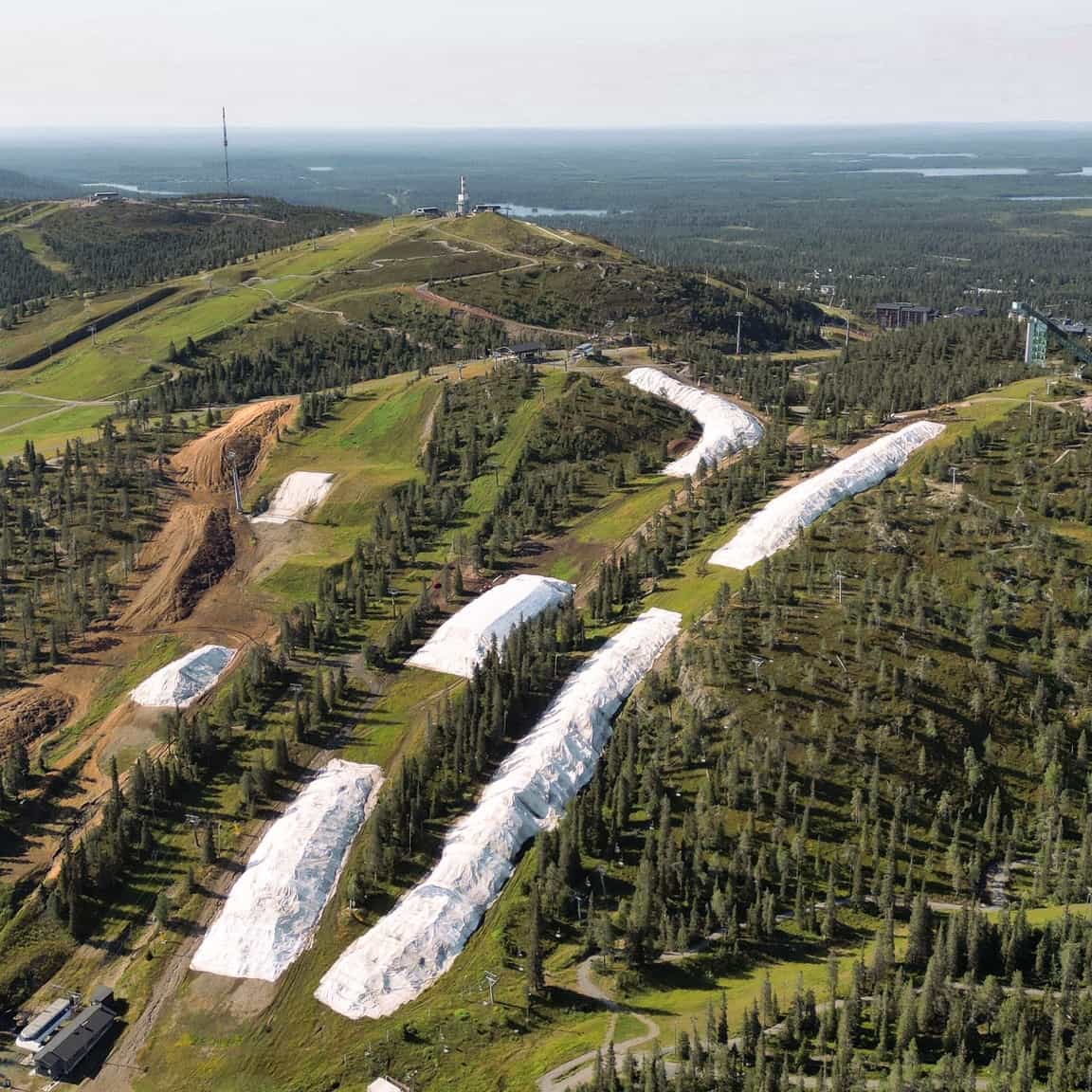
Consistent snowfall year after year, especially in the early season, can be unpredictable as many of us unfortunately know. For myself and all of the Lake Tahoe region, we experienced record-breaking snow during the 2022/23 season that started strong in early November and did not let up until May. This season, as resorts around the area pushed back opening days due to warmer temps and lack of natural snowfall, I can’t help but ponder the thought and possibility of snow farming.
Would storing enough snow to ski later into the spring or even perhaps open earlier in the fall ever be practical or logical at destination resorts or larger ski areas around the West Coast and Rockies? Was last season a perfect opportunity to test the waters?
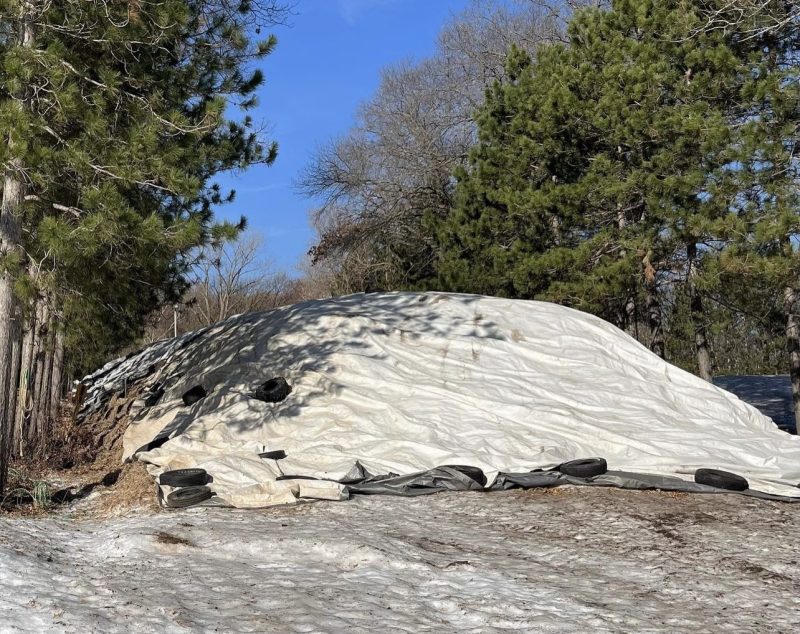
Just plant some snow, then water and watch it grow?
First, let’s take a look at the various methods of snow farming used around the world. Timberline Lodge, Oregon makes giant “snow spines” on the Palmer Snowfield which create low spots, where blowing snow heavily accumulates. Doing so helps build an enormous base of snow that sticks around well into the summer months for skiing and riding. Lake Louise in Alberta, Canada sets up temporary fencing perpendicular to prevailing winds, which in turn helps drop the blowing snow just on the other side of the fence. With early season, higher elevation storms, they’re able to collect and spread the piles down the runs accordingly. Lastly, resorts from Wisconsin to Finland use hay, reflective tarps or white felt, and insulated panels to help preserve snow. This can help ski areas get a head start on the season in a much more cost effective way than blowing man-made snow.
Pros
- Substantially more cost effective than snowmaking.
- Less water usage for snowmaking and less energy running snow guns.
- Earlier/later possibility of opening/closing and hosting events during the off-season.
Cons
- Possible waste of effort/money/energy if less successful than anticipated or poorly executed.
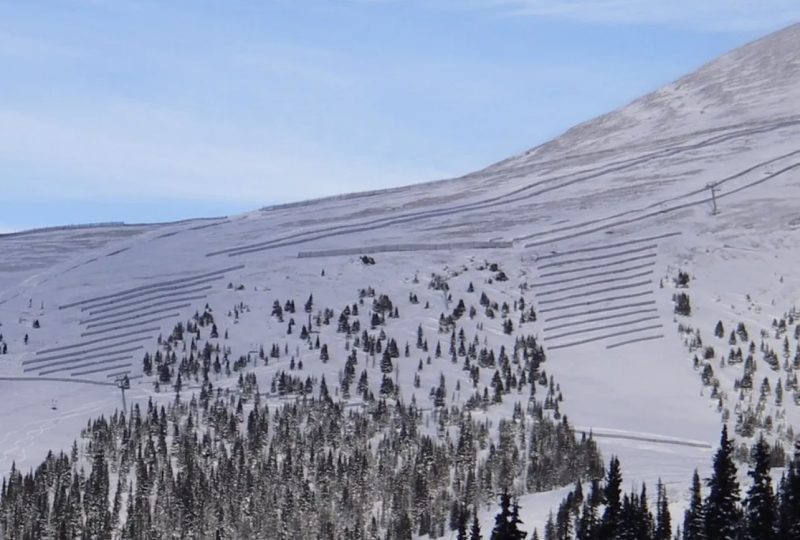
Could snow farming turn into a reliable practice?
Some variables and factors contribute to successful snow farming and help explain why destination resorts in California and Utah would or would not attempt doing so. Most notable is the question of consistent revenue in the early and late season. While some of us diehards chase turns all year, would enough people buy day passes and take advantage of extra amenities in the off-season? Next, and almost equally as relevant; many ski resorts in Utah and California operate under U.S. Forest Service lease agreements. This means that without an extension to their land-use permit, these resorts are unable to open or close much before or after their designated dates. This alone could be enough of a deterrent for resorts to avoid ever investing in or attempting to farm snow. In addition, weather and climate, elevation, and slope direction all play a significant role in the ability to snow farm.
Resorts all over the United States are facing a similar challenge; an upward trend of skier visits paired up against an ongoing battle with climate change. Seasons like last year for Utah and California bring anomalies of both record-breaking snowfall and skier visits. However, in regards to snowfall, this will not always be the case. Also, as studies continue to come out showing the harmful effects of snowmaking, alternative practices and methods will become necessary in order to reach environmental impact goals.
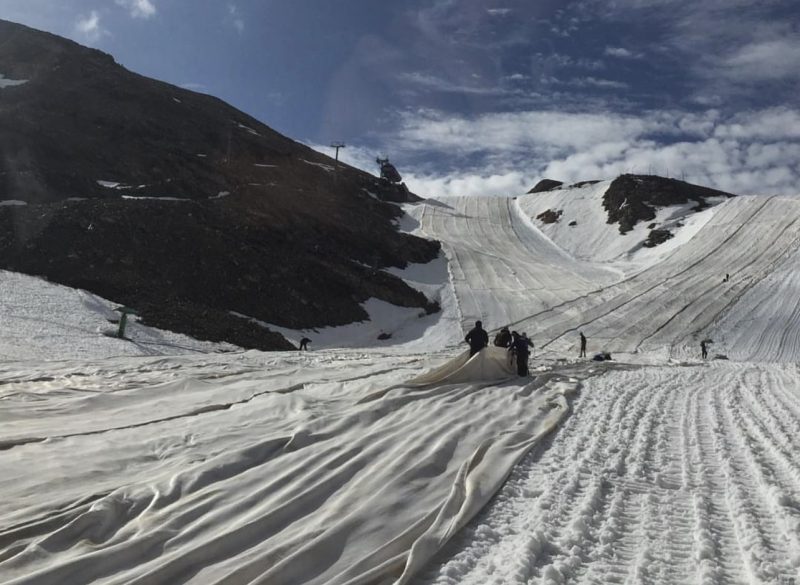
In Europe, there are a handful of ski areas that rely on snow farming over snowmaking in order to host early season events or commence the season.
- Ruka, Finland: Started snow farming in 2016 using white gauze to keep the snow at a low temperature and sawdust to keep the sun from beating down on it. Using these methods, Ruka was able to successfully store over 37 acres of snow in 2023.
- Levi, Finland: Started in 2016 also by using saw dust, however the fall winds’ were an issue. Now, the snow is saved using both fleece-style geotextile blankets and a new preservation technology developed by Snow Secure that utilizes Finnfoam insulation material.
- Diavolezza, Switzerland: Started in 2007, using similar practices such as sawdust that have continually advanced. Now, large snow piles are formed before being covered with a durable polypropylene fleece which insulates and reflects the sun’s rays.
- Livigno, Italy: Started in 2016 to accommodate a cross-country ski race in August and training for professional teams in October. They use sawdust and geotextile sheets similar to Levi’s.
One of the biggest questions and concerns regarding snow farming lies around the loss of snow during the hot, sunny summer months. Surprisingly, the sun’s solar rays only contribute to 20-30% of melting, while wind and temperature are the largest factors in a melting snow farm. These techniques being used aim to minimize the effects of Mother Nature as much as possible.
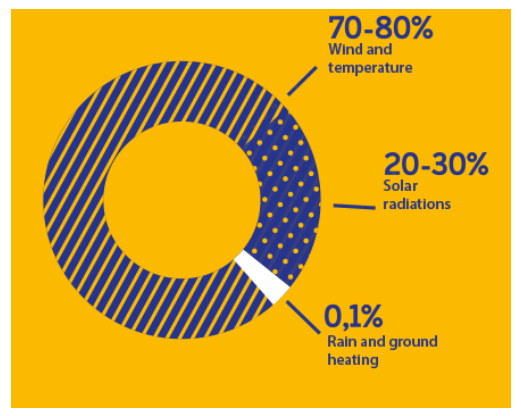
Ski resorts around the world share a similar goal: aiming towards more sustainable, eco-friendly operations so we can all enjoy this activity and the beauty and joy it brings for generations to come. Perhaps as the pressure increases, snow farming will be looked to as a viable option for California, Utah, and more resorts across the United States.
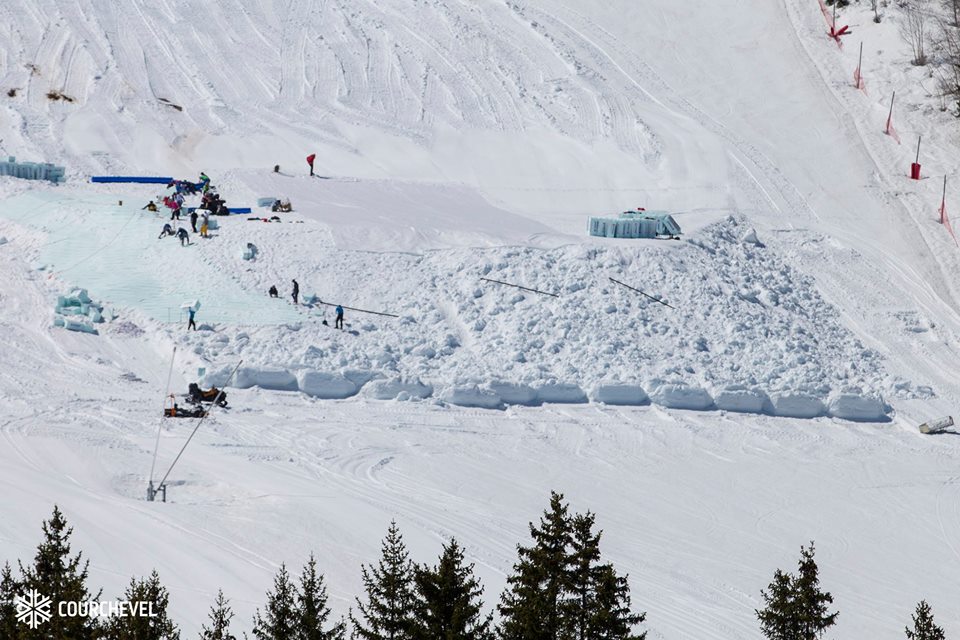
There is already an environmentally friendly and sustainable solution specifically for this area of application: a nonwoven fabric that is naturally resistant and therefore ideal for snow management. It also has very good UV resistance with high UV reflection values.
https://www.glacierprotect.com/en/